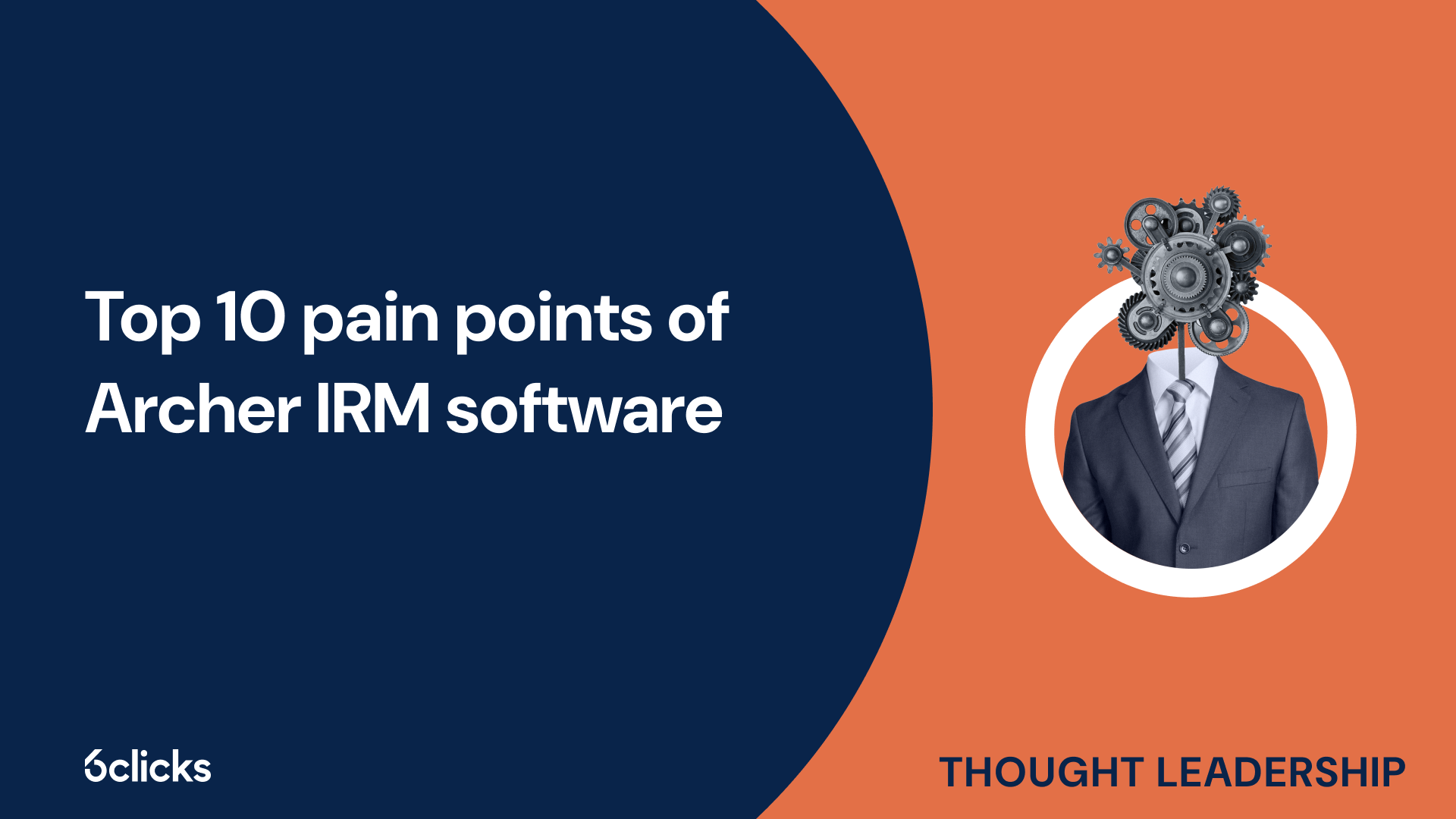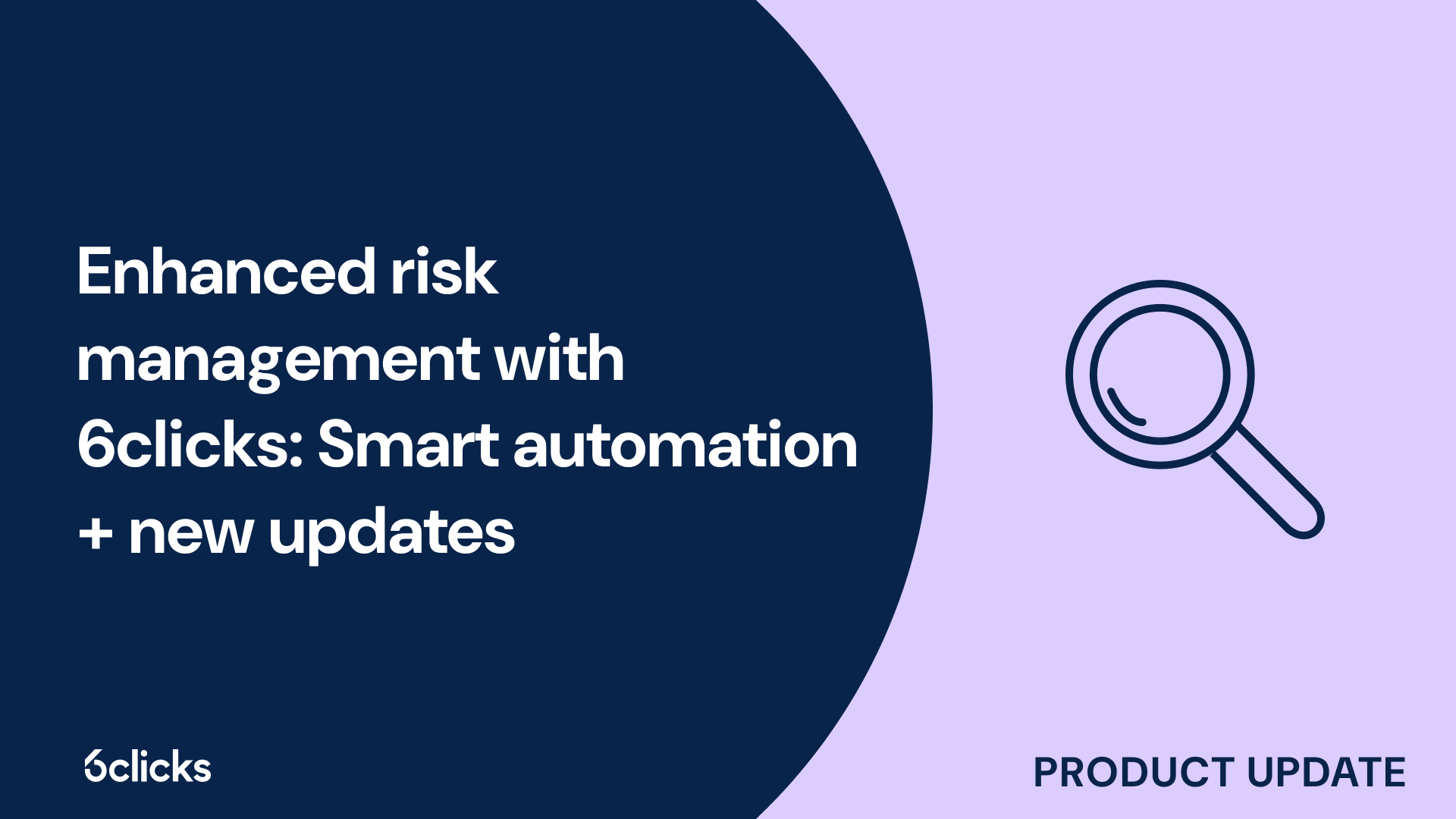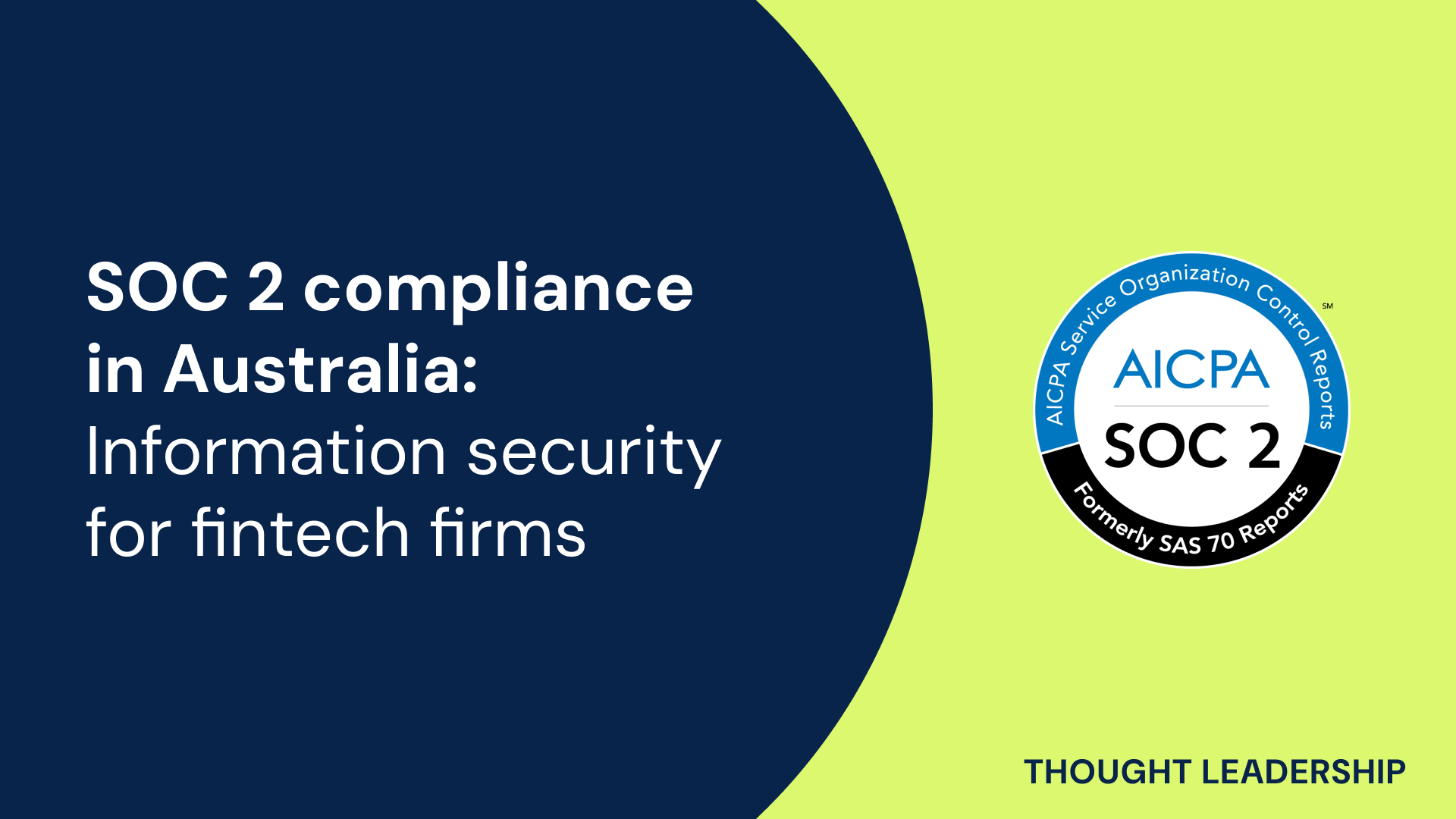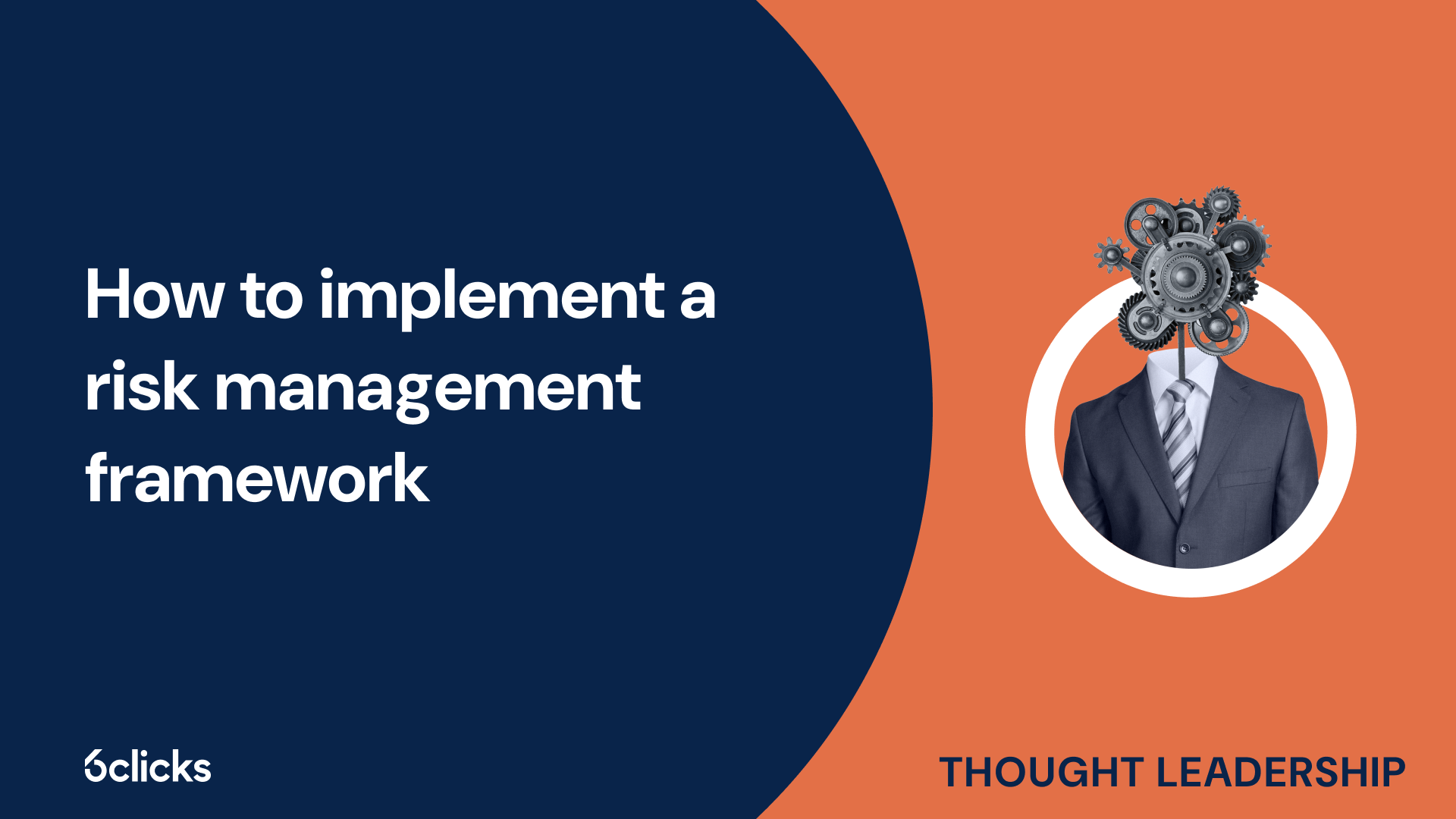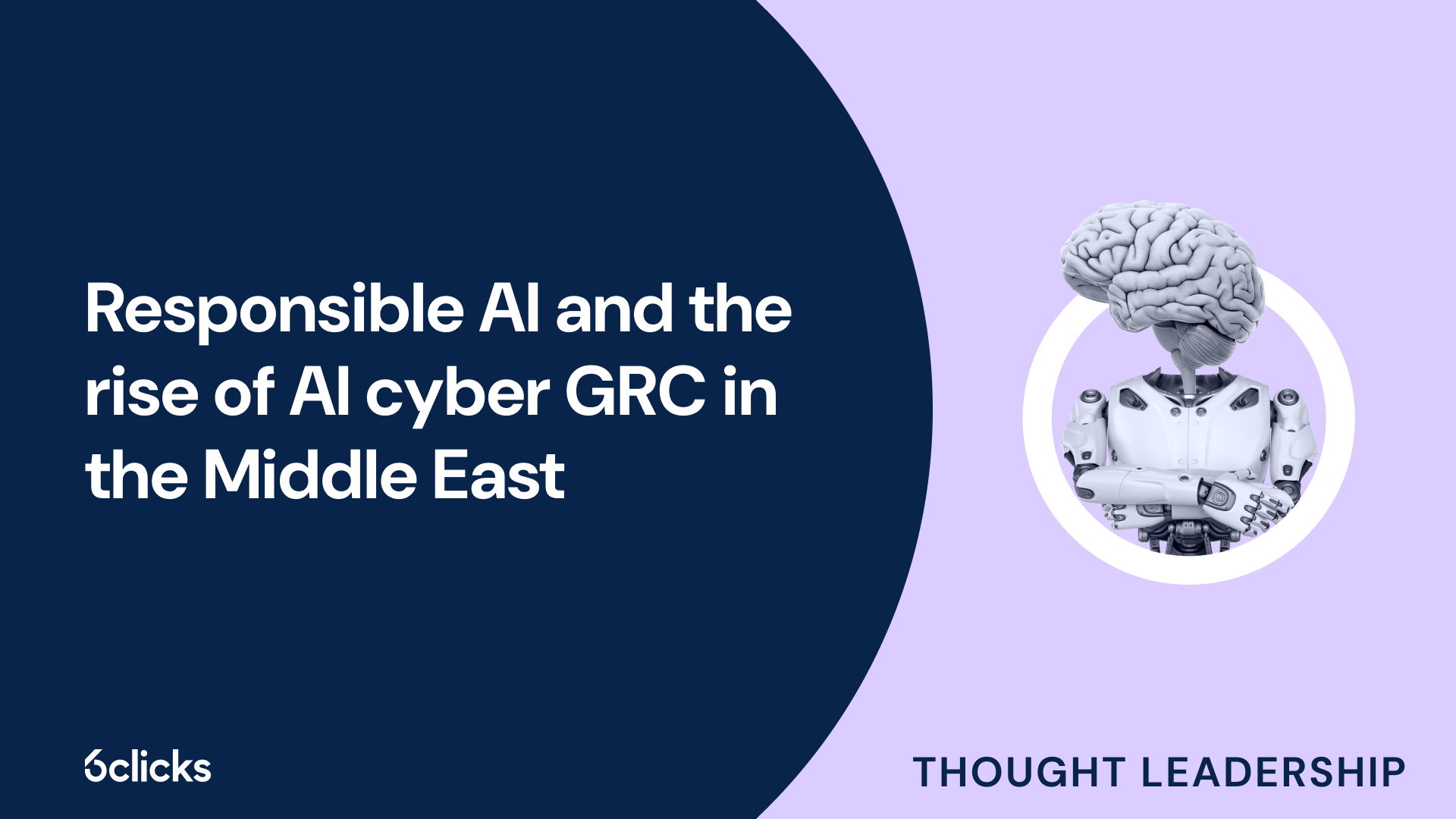The GRC buyer’s guide for 2025: Building resilience with AI-powered, federated solutions
Discover the ultimate GRC buyer's guide for 2025! Uncover how AI-powered, federated solutions transform compliance and security management for industries like government, aerospace, banking, and more. Learn about centralized control, continuous compliance, and advanced cyber GRC capabilities. Download now!
-1.png?width=200&height=249&name=Group%20193%20(1)-1.png)
The GRC buyer’s guide for 2025: Building resilience with AI-powered, federated solutions
What is GRC software?
GRC software (Governance, Risk, and Compliance) helps organizations manage audits, compliance, and risk. It ensures business goals align with compliance and regulatory standards. By automating processes like document and audit management, GRC software reduces manual work and boosts efficiency. It integrates various tools to streamline risk management, governance, and internal controls. With predictive analytics, it helps identify risks early, aiding proactive decision-making. Ultimately, GRC software cuts costs, enhances compliance, and supports digital transformation.
Benefits of GRC software
- Executives: Helps identify and manage organizational risks with a unified risk management framework. It aligns decisions with overall business strategy, ensuring better resource allocation, reducing uncertainties, and improving corporate governance by ensuring compliance with regulations.
- Finance managers: Simplifies compliance by automating audits, risk assessments, and monitoring controls. This not only reduces compliance costs but also ensures better transparency, accuracy, and accountability in financial reporting and decision-making.
- Legal teams: Streamlines the management of legal documents and records retention, improving organization and retrieval. This reduces legal risks, enhances compliance with regulatory record-keeping requirements, and improves efficiency in handling discovery and other legal processes.
- IT directors: Facilitates the seamless implementation and integration of GRC systems across departments. By automating manual processes and eliminating inefficiencies, it reduces operational costs, enhances security, and strengthens the overall risk management framework across IT systems.
Types of GRC software
GRC software comes in different types to meet specific business needs:
Risk management software
Risk management software helps organizations identify, assess, and address various risks—operational, financial, IT, compliance, and reputational. By centralizing risk data, it gives businesses a comprehensive view of their risks, tracks risk assessments and mitigation efforts, and aids informed decision-making. This software improves resource allocation and enhances overall risk management.
Compliance management software
This software helps track and manage regulatory compliance. Key features include document management, which keeps all compliance documents in one place; risk management tools to identify and prioritize compliance risks; workflow automation for policy creation and approval; and audit support. It ensures businesses maintain adherence to regulations and simplifies internal audits and reporting.
Audit management software
Audit management software streamlines the internal audit process. It helps plan, execute, and document audits efficiently. Features include audit trail logging, which tracks audit activities and findings, and centralized audit data for easier access. It improves transparency, ensuring compliance with regulations and providing clear, actionable insights.
Business continuity planning software
This software helps organizations prepare for disruptions by creating and managing business continuity plans. It identifies risks and vulnerabilities, facilitates collaboration, and reduces downtime costs.
Key features of business continuity planning software:
- Risk assessment and analysis tools: Identify vulnerabilities and assess potential impacts on systems.
- Automated plan creation and updates: Streamline the development and maintenance of continuity plans.
- Notification and alert systems: Ensure timely communication during disruptions or incidents.
- Testing and simulation functionalities: Evaluate the effectiveness of business continuity plans.
- Integration with OT management systems: Facilitate seamless monitoring and management of critical systems.
- Reporting and analytics: Provide insights into system resilience and inform decision-making.
- Compliance tracking: Ensure adherence to industry standards and regulatory requirements.
Governance, risk and compliance (GRC) platforms
GRC platforms provide organizations with an integrated solution to manage risk, ensure compliance, and strengthen security. These platforms offer a variety of features that help streamline processes, improve risk management, and enhance compliance efforts.
Key features of GRC solutions
GRC solutions help organizations manage risks, ensure regulatory compliance, and align business strategies with goals. Key features include:
Document management & automation tools
Document management and automation tools help streamline evidence collection, reporting, and continuous control monitoring.
- Store and organize documents like policies and compliance forms for easy retrieval.
- Automate data collection, improving accuracy and consistency.
- Monitor compliance in real-time, detecting deviations and enabling timely corrective actions.
These tools save time, reduce errors, and improve compliance posture by automating processes and providing real-time alerts.
Workflow & process automation tools
Workflow and process automation tools enhance efficiency in GRC systems by automating tasks like evidence collection and compliance monitoring.
- Standardize workflows for audits, risk assessments, and compliance activities.
- Automate data collection and integration, ensuring accuracy and consistency.
Automation reduces manual work, improves decision-making, and enhances real-time risk monitoring.
Dashboards & reporting features
Dashboards and reporting features in GRC software provide real-time insights into risk and compliance efforts.
- Automated reports save time and reduce errors, ensuring accurate and reliable data.
- Customizable dashboards offer a clear view of compliance statuses, easily shared with stakeholders.
These features simplify data management and help organizations make informed decisions.
User experience enhancements
GRC software prioritizes ease of use with intuitive interfaces and comprehensive support.
- User-friendly designs improve navigation and productivity.
- Training resources and support services ensure smooth onboarding and usage.
These enhancements make GRC tools more accessible and effective for users.
Audit trail & logging capabilities
Audit trail and logging capabilities track all actions within the GRC system, ensuring transparency and accountability.
- Every update and change is logged, providing a detailed history of compliance and risk management activities.
- Clear documentation of actions promotes responsibility and helps mitigate risks.
Clear documentation of actions promotes responsibility and helps mitigate risks.
Implementation considerations for GRC solutions
Implementing GRC (Governance, Risk, and Compliance) solutions requires a holistic approach that includes technology, people, and processes.
- Understand organizational needs: Align the GRC solution with the organization’s specific goals, risk landscape, and regulatory requirements.
- Assess current GRC capabilities: Identify gaps in existing processes and define a roadmap for improvement.
The GRC capability model guides the implementation process through four key steps:
- LEARN: Understand the organization’s risks, regulations, and goals.
- ALIGN: Ensure GRC efforts align with business objectives and risk tolerance.
- PERFORM: Execute risk assessments, control measures, and compliance monitoring.
- REVIEW: Periodically evaluate the effectiveness of GRC activities.
When selecting actions and controls, consider the organization's size, complexity, industry, and risk profile. Striking a balance between prevention, detection, and response ensures a robust GRC approach.
Summary
GRC (Governance, Risk, and Compliance) software enables organizations to manage risks, ensure compliance, and streamline governance processes. By automating tasks such as document management, audits, and reporting, it reduces manual work, increases efficiency, and aligns business strategies with regulatory requirements. With features like predictive analytics, GRC software helps identify risks early, allowing for proactive decision-making and supporting business continuity.
The software provides key benefits across various departments. Executives gain a unified risk framework, finance teams improve compliance and transparency, legal teams enhance document management, and IT directors strengthen security and efficiency. There are different types of GRC software, including tools for risk management, compliance, auditing, and business continuity planning, each designed to meet specific organizational needs and improve overall performance.





